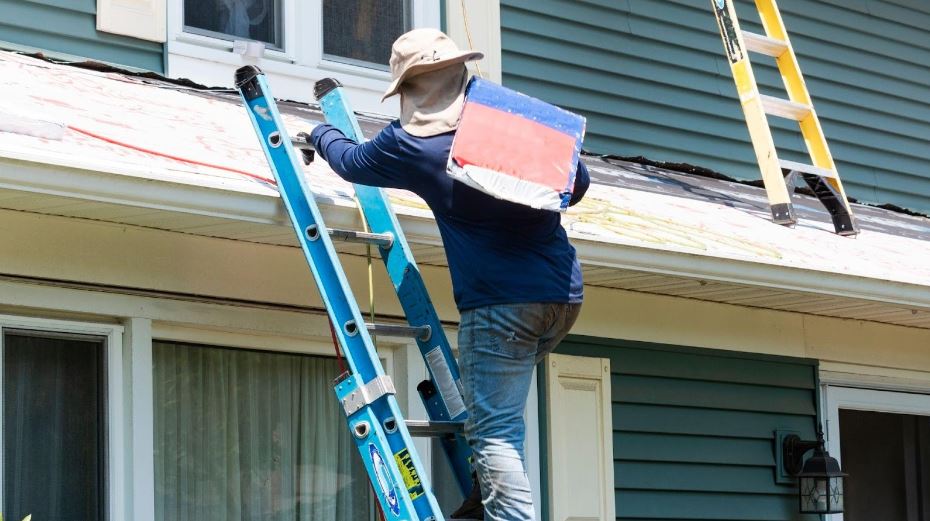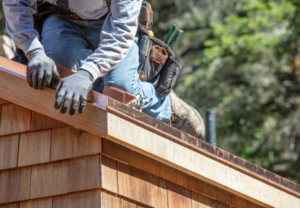When it comes to working on roofs, safety should always be the top priority. Whether you’re a professional roofer, a DIY enthusiast, or simply someone looking to perform maintenance tasks around your home, using the right tools can make a significant difference. One such essential tool is a roof ladder. This specialized ladder provides a safe and stable means of reaching and working on elevated surfaces, particularly roofs. In this article, we will explore the importance of a roof ladder, its various types, how to choose the right one for your needs, and the benefits of using it.
What is a Roof Ladder?
A roof ladder is a type of ladder specifically designed for use on roofs. It is equipped with features that allow it to be securely positioned on the roof while providing a stable and comfortable platform for the person working on it. Roof ladders are often used by professional roofers, construction workers, and homeowners to access sloped or high roofs.
A typical roof ladder consists of a long frame with a set of rungs, and it often includes a hook or stabilizer mechanism at the top to help secure it to the roof. This prevents the ladder from sliding or shifting while you are climbing or working on it. Roof ladders are also designed to distribute weight evenly, ensuring the person using the ladder can maintain balance and stability.
Types of Roof Ladders
There are several types of roof ladders, each suited for different types of roofs and tasks. The main differences between these ladders come in the form of design, material, and weight capacity. Here are some common types of roof ladders:
1. Hooked Roof Ladders
One of the most common types of roof ladders is the hooked roof ladder. This ladder is designed with hooks at the top, which allow it to securely hook over the ridge of the roof. The hooks ensure that the ladder does not slip or shift, providing a safe and stable platform for workers. These ladders are ideal for pitched roofs, offering excellent support and security.
2. Roof Access Ladders
Roof access ladders are typically used to provide access to flat roofs or areas that require vertical access. These ladders are often long and straight, without hooks, making them suitable for structures that do not have a ridge or peak. Roof access ladders are often lightweight, making them easier to transport and set up.
3. Telescoping Roof Ladders
Telescoping roof ladders are designed with adjustable length sections that allow the ladder to extend and contract for easy storage and transport. These ladders are versatile and can be used in various situations, making them ideal for homeowners and professionals who need a ladder that can fit different roof heights and slopes.
4. Aluminum Roof Ladders
Aluminum roof ladders are known for being lightweight, durable, and resistant to rust. This makes them an excellent option for working on roofs in all kinds of weather conditions. Aluminum ladders are often easy to move, which is an essential feature for professionals who need to work on different properties regularly.
5. Fiberglass Roof Ladders
Fiberglass roof ladders are designed for those who need to work around electrical hazards. Since fiberglass is a non-conductive material, these ladders are a safer option for electricians or anyone working in proximity to electrical wires. They are also durable and can withstand the elements.
How to Choose the Right Roof Ladder
Selecting the right roof ladder is crucial for ensuring safety and comfort during your work. Here are some factors to consider when choosing the best roof ladder for your needs:
1. Roof Type
The type of roof you are working on will determine the kind of ladder you need. For pitched roofs, a hooked roof ladder is the best choice, as it will securely hook over the ridge. If you are working on a flat roof or need access to a specific height, a roof access ladder or telescoping ladder may be more suitable.
2. Weight Capacity
Each roof ladder has a maximum weight capacity, which should never be exceeded. Make sure to choose a ladder that can support both your weight and any tools or equipment you will be carrying. It is always safer to opt for a ladder with a higher weight capacity than necessary.
3. Material
Roof ladders come in various materials, including aluminum, fiberglass, and steel. Aluminum ladders are lightweight and resistant to rust, while fiberglass ladders are ideal for working around electrical hazards. Consider the environment in which you will be using the ladder to make an informed decision about the material.
4. Height and Reach
The height of the roof ladder is another important consideration. Make sure the ladder is long enough to provide safe access to the roof while leaving enough length to maintain stability. A ladder that is too short can be dangerous, while a ladder that is too long may be difficult to maneuver.
5. Portability and Storage
If you plan to use your roof ladder frequently, portability and ease of storage are key factors to consider. Telescoping roof ladders are often a good choice in this case, as they can be adjusted in length and easily stored when not in use. Additionally, lightweight materials like aluminum will make the ladder easier to carry.
The Benefits of Using a Roof Ladder
Using a roof ladder offers several benefits that contribute to both safety and efficiency. Here are some of the primary advantages:
1. Increased Safety
Safety is the most significant benefit of using a roof ladder. A roof ladder provides stability and reduces the risk of accidents caused by unstable or inadequate ladders. Many roof ladders have hooks or stabilizers that prevent slippage, ensuring that you can work safely at height.
2. Improved Access
A roof ladder allows you to access areas that might otherwise be difficult or dangerous to reach. Whether you’re performing repairs, cleaning gutters, or installing roof features, a roof ladder provides a stable means of reaching high and sloped surfaces.
3. Durability and Longevity
Many roof ladders are made from durable materials like aluminum and fiberglass, which are resistant to rust and wear. This means you can rely on your roof ladder for many years, even in harsh weather conditions. Investing in a high-quality roof ladder will pay off in the long run by ensuring it remains functional and safe.
4. Ease of Use
Roof ladders are designed to be user-friendly, with features like wide rungs, stable platforms, and lightweight frames that make them easy to climb and navigate. Whether you’re a professional roofer or a DIY enthusiast, a roof ladder will help you get the job done more efficiently.
5. Versatility
Roof ladders are versatile and can be used for a variety of tasks, including roof repairs, cleaning, and maintenance. Many types of roof ladders can be used on different roof styles, making them a valuable tool for both residential and commercial applications.
Maintenance and Care of a Roof Ladder
To ensure your roof ladder remains in optimal condition, it’s essential to perform regular maintenance. Here are some tips to help you care for your ladder:
- Inspect the ladder regularly for any signs of damage, such as bent rungs or cracks. If you find any issues, repair or replace the ladder as soon as possible.
- Clean the ladder after use to remove any dirt, debris, or moisture. This will help prevent rust and extend the lifespan of your ladder.
- Store the ladder properly in a dry, safe location. This will protect it from the elements and prevent damage over time.
Conclusion
In conclusion, a roof ladder is an essential tool for anyone who needs to access roofs safely and efficiently. With various types available, including hooked, telescoping, and fiberglass options, there is a roof ladder for every task and environment. Choosing the right roof ladder depends on factors like the type of roof, weight capacity, material, and portability. By using a roof ladder, you can improve safety, access, and overall productivity, making it an indispensable tool for both professionals and DIYers. So, whether you’re working on a flat roof or a pitched one, investing in a quality roof ladder is a smart decision for your safety and peace of mind.






